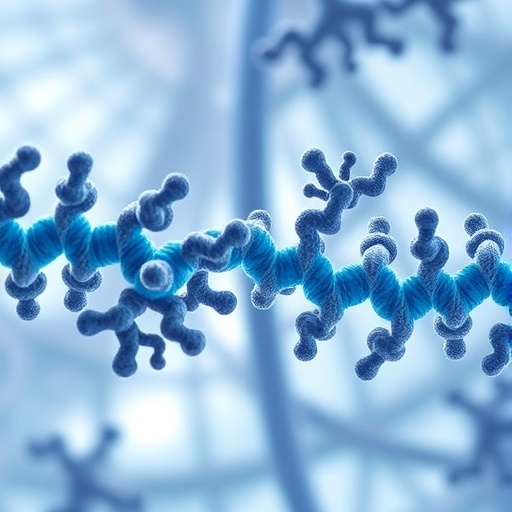Tetraspanins, a family of membrane proteins, have recently emerged as crucial players in the complex biological landscape of organ fibrosis, a pathological condition characterized by excessive formation of connective tissue, which often leads to organ failure. The innovative research led by Li, S., Li, M., and Zhang, Y. published in the Journal of Translational Medicine, highlights groundbreaking insights into the mechanistic roles these proteins play in the progression of fibrosis, shedding light on potential therapeutic avenues that could revolutionize treatment options for fibrotic diseases.
Understanding the role of tetraspanins in organ fibrosis begins with a thorough examination of their structural characteristics. Tetraspanins are characterized by four transmembrane domains, which facilitate their interaction with a diverse array of partner proteins, including integrins and growth factor receptors. These multifaceted interactions position tetraspanins at pivotal junctures in cellular signaling pathways, allowing them to modulate processes such as cell adhesion, migration, and proliferation—critical components in the fibrotic response.
In the context of organ fibrosis, tetraspanins have been shown to influence the behavior of various cell types, particularly fibroblasts and myofibroblasts. Myofibroblasts, notorious for their role in tissue remodeling, are central to the fibrogenic process. The research indicates that tetraspanins orchestrate the activation of fibroblasts into myofibroblasts, a transformation that is often accompanied by the secretion of extracellular matrix components. This is a double-edged sword; while some degree of tissue repair is essential, unchecked myofibroblast activity leads to pathological fibrosis.
Moreover, the overexpression of specific tetraspanins correlates with pro-fibrotic cytokine signaling, enhancing the fibrotic microenvironment. For instance, the study elucidates how tetraspanin-8 and tetraspanin-4 contribute to the enhancement of TGF-β signaling pathways, which are known to be instrumental in fibrotic pathologies. By amplifying these signaling cascades, tetraspanins facilitate a vicious cycle of inflammation and fibrotic progression, underscoring their role as potential therapeutic targets.
Importantly, the research investigates how tetraspanins may be involved in the crosstalk between epithelial and mesenchymal cells within fibrotic tissues. This interaction is critical as it emphasizes the importance of cellular communication within the fibrotic niche. The disruption of normal epithelial-to-mesenchymal transition (EMT) pathways, primarily elicited by tetraspanin activity, not only contributes to fibrosis but also poses significant challenges in managing organ regeneration.
Therapeutically, targeting tetraspanins presents a promising avenue for innovative fibrotic treatments. The researchers propose that by modulating the expression or activity of select tetraspanins, we may be able to curb the excessive fibroblast activation and mitigate tissue scarring. This approach holds the potential to create more effective strategies for managing chronic fibrotic diseases such as idiopathic pulmonary fibrosis and liver cirrhosis.
Moreover, the investigation into tetraspanins also opens a dialogue about the possibility of developing biomarker assays for early detection of fibrotic diseases. The differential expression patterns of tetraspanins in various stages of fibrosis may serve as indicators of disease progression and therapeutic response, setting a foundation for personalized medicine approaches that could enhance patient outcomes significantly.
In exploring the broader implications of their findings, the authors emphasize that understanding the cellular and molecular roles of tetraspanins might unlock new strategies in regenerative medicine, where the goal is to not only halt fibrosis but also restore normal organ function. The potential for tetraspanins to act as mediators in both pathological and reparative processes positions them as a double-edged sword in the quest for novel therapeutic interventions.
It is noteworthy that tetraspanins are not only restricted to fibrotic pathways but are also implicated in various other disease processes, including cancer progression and immune responses. This multifaceted nature presents both opportunities and challenges in drug development, as therapies targeting tetraspanins must be carefully designed to minimize adverse effects while maximizing benefits in the context of organ fibrosis.
The compelling evidence presented in this study stresses the importance of continued research into the role of tetraspanins. As we move forward, unraveling the complexities of their interactions within fibrotic environments will be essential in developing truly transformative therapies that can restore health and functionality to damaged organs.
In conclusion, the research by Li, S., Li, M., and Zhang, Y. serves as a seminal contribution to the understanding of organ fibrosis, highlighting the significant role of tetraspanins in this pathological process. Their work not only exemplifies the intricate biology underpinning fibrosis but also points towards a future where tetraspanin modulation could become a cornerstone of fibrotic disease management.
As we forge ahead in this field, the integration of tetraspanin research with current therapeutic paradigms will undoubtedly lead to a more nuanced understanding of organ fibrosis and the development of novel interventions capable of altering the disease trajectory for countless patients worldwide.
Subject of Research: Role of Tetraspanins in Organ Fibrosis
Article Title: The role of tetraspanins in organ fibrosis: mechanisms and therapeutic perspectives
Article References:
Li, S., Li, M., Zhang, Y. et al. The role of tetraspanins in organ fibrosis: mechanisms and therapeutic perspectives.
J Transl Med 23, 1007 (2025). https://doi.org/10.1186/s12967-025-06890-9
Image Credits: AI Generated
DOI: 10.1186/s12967-025-06890-9
Keywords: Tetraspanins, organ fibrosis, fibroblasts, therapeutic targets, regenerative medicine, cytokine signaling.




